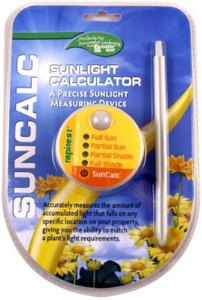The Snarky Gardener loves to plan his garden planting and GrowVeg.com is what he depends on year after year.
When it comes to my garden, I’m a planner. I love to design it over the winter when the snow’s on the ground, obsessively moving plants around over and over again. GrowVeg.com lets me undertake this without issue. Each year is represented in its own plan with the previous year copied over onto the next one so to include perennials and mark the previously planted families (nightshades, legumes, spinach, etc).

In preparing for battle I have always found that plans are useless, but planning is indispensable. – Dwight D. Eisenhower

Shown above and below is the planner’s interface. The garden displayed is my 50′ by 30′ fenced backyard garden as of July 2015. Another nice touch is the ability to not only represent the various fruits and vegetables via graphic (notice the strawberries to the upper left?) but to also attach the variety to the plant. You can even add your own varieties if they are not listed (looking at you Snarky Orange Cherry tomatoes).


Monthly charting is easy and straight forward.
Another plus of using an online garden planning site such as GrowVeg.com is that you can see your garden’s progression through the season. Here’s an example of my garden from April to September 2015. See how the spinach disappears (because it bolted and when to seed) and others come in to take their place. Succession planting at its best. In June the Swiss chard, eggplants, and peppers are planted. and in July, beans (both green and dry) to fill out my garden. Note: the brown rectangles represent my raised hugelkultur beds.





Pros:
Plant Families with previous 3 years
Varieties
Perennials
$45 for 2 years
Publish to Web
Plant List includes location based planting and harvest times
Ability to add your own varieties
Detailed growing information on each plant.
There are some downsides to GrowVeg.com
I do really love the ability to publish my plans out to the web, but there are limitations to the size you can show. Of course this is because if you get too wide, the detail will be difficult to see, but it’s a restriction nonetheless.
You can also notice by the graphical nature of the software, it’s really easy to tell when I’m not working on work at work. I’ve had many a curious co-worker as me what I was planning on planting. It’s so obvious to those who don’t even garden. Guess I’ll just have to plan at lunch time or at home (which isn’t a bad idea anyways).
As shown earlier in this post, I do enjoy the month-by-month tracking of my garden. My only wish is that I could go week-by-week instead. I’m a detail oriented person, and knowing which week something was planted or removed would help immensely.
Cons:
Size limitations if you use Publish to Web
Co-workers know that I’m not working
Wish for more granularity (weeks instead of months)
More plants (missing yarrow for example)
A valuable tool to plan your garden.
So as you can see, GrowVeg.com has many features to let you design the perfect garden. Month-to-month and year-to-year representations of your plots are available at your fingertips.













